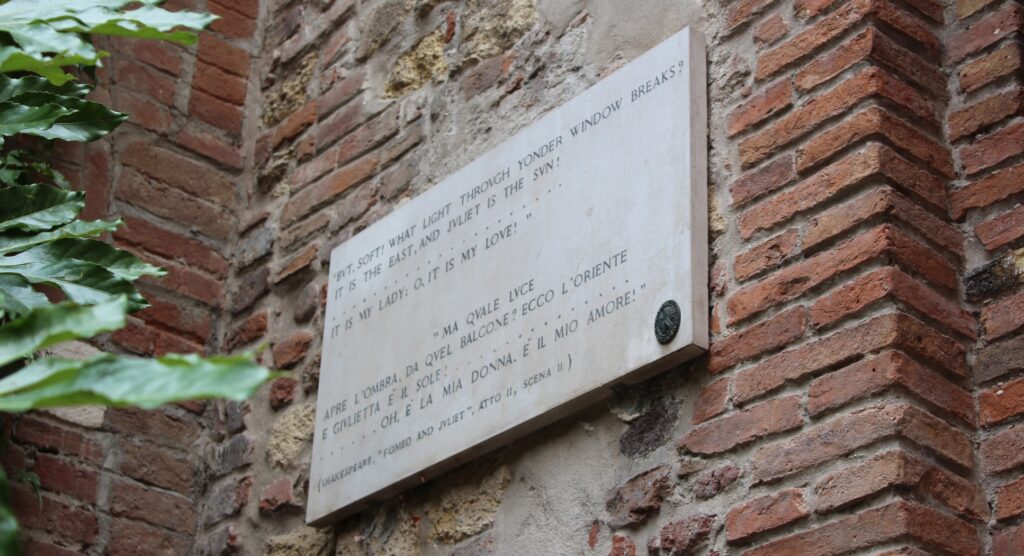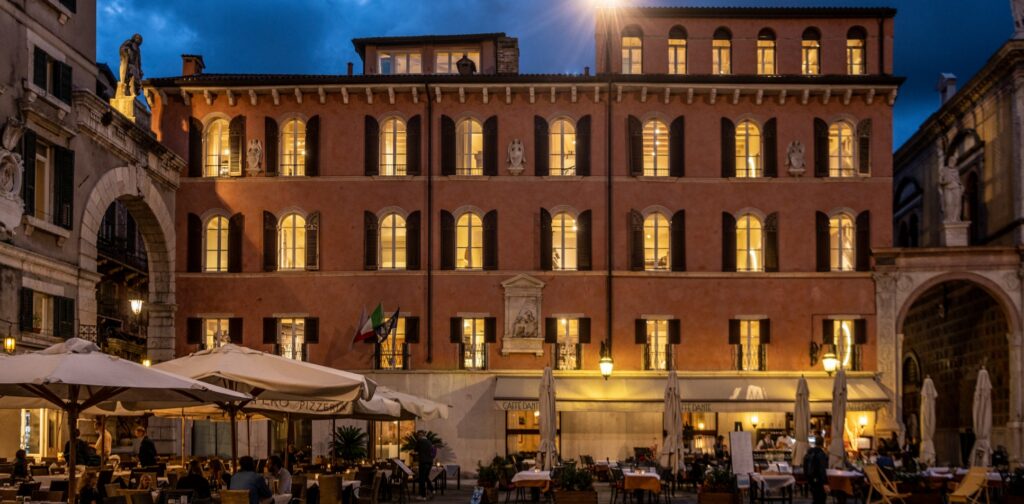Romeo and Juliet
Among the 14th-century palazzi, streets and piazzas – this is where legend narrates that Romeo and Juliet met and fell in love.
Everyone knows the story of Romeo and Juliet, but few know that the legend is not entirely fictional.
Dante, whose statue in front of Lords of Verona reminds us of the seven years he spent in Verona as a guest of the della Scala family, described the Montecchi (Montague) and Capuleti (Capulet) feuds in canto VI of Purgatory when recounting the violent fights between the Guelphs and Ghibellines.
Exit Lords of Verona, continue left, pass the Arche Scaligere and immediately on the right you will find the home of the Montecchi, a historical Verona family. With its typical Ghibelline battlements, it looks like a castle, a reminder of the struggles which covered the city in blood when Verona’s important families were pitted against each other.

We don’t know if Romeo really existed, but we like to imagine him leaving home and rushing to see Juliet. We can follow his steps towards the Capulet house, which is nearby in via Cappello. Juliet’s house is an old tower house dating back to the late 13th century, today transformed into a museum. You can imagine her leaning out from the picturesque balcony in the courtyard while exchanging promises of love with Romeo.
Continuing along Via Cappello and beyond the old medieval walls, you will arrive at the monastery of San Francesco al Corso where, according to accounts preceding Shakespeare’s work, Juliet was buried when, having drunk Brother Lorenzo’s potion, everyone believed her dead.

